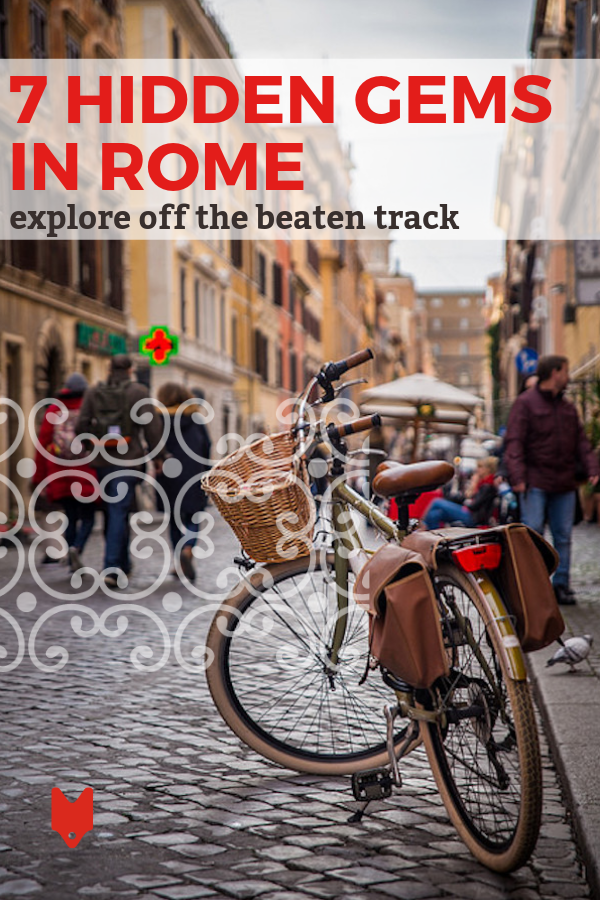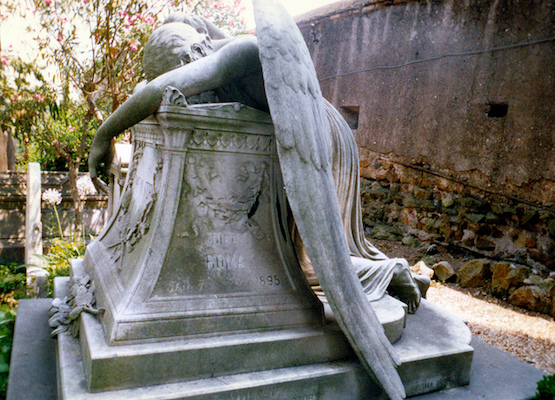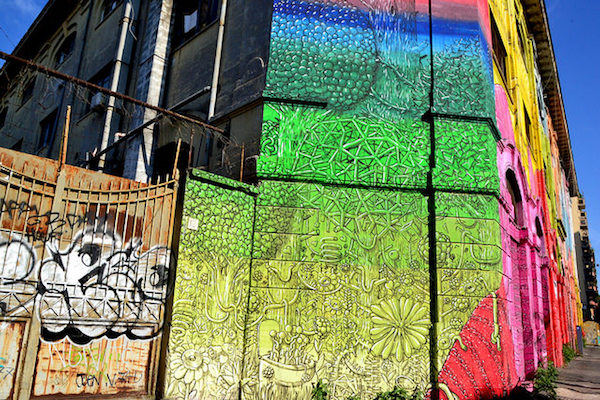Last Updated on December 20, 2025 by Emma Fajcz | Published: January 31, 2019
Rome has an incredible amount of world-famous and iconic sights. What is on your list once you have thrown your coins into the Trevi fountain, seen the Colosseum and explored the Imperial Forums? We have a few ideas to help you to explore Rome off the beaten track.

Photo Credit: Max Dawncat, Text Overlay: Devour Rome Food Tours
Is your Metro station a museum?
Rome is a city of many layers. Almost anywhere in the historic center, you are probably walking on at least three levels of history. One of the city’s newest metro stations gives you the chance to see how extraordinary this really is.
While digging to create a new very modern metro line “C” stop at San Giovanni workers came across thousands of archeological treasures. For the price of a metro ticket, descend from the Middle ages through Imperial Rome and to Imperial Rome. The deeper you go the farther back in time you travel. At 100 feet below street level is the deepest part of the station and where there are remnants from the Pleistocene age. On display are fragments of painted ceramics and marble statues, tiny gold coins and colossal amphora.
Visit the Non-Catholic Cemetery
Look for the enormous 2,000-year-old pyramid and you will know you are close to one of Rome’s most peaceful spaces. Located on the edge of the Testaccio neighborhood is the Non-Catholic Cemetery.
Since 1716 this green and lush expanse is where foreigners and non-catholic residents and visitors to Rome could be buried. This is famously the final resting place of literary notables like John Keats and Percy Bysshe Shelley and the co-founder of the Italian Communist Party Antonio Gramsci.
Take your time to quietly meander amongst the elaborate tombs and thoughtfully tended exotic plants and flowers and pay your respects to Sarah Parker Remond who was an African-American anti-slavery activist and doctor and the heartbreaking sculpture dedicated to Emelyn Story by her husband the renowned sculptor William Wetmore Story.

Find the Skull of Saint Valentine
Walk past the line that snakes up and around towards the Campidoglio for the Bocca di Verita and look for the door to the 8th-century church of Santa Maria in Cosmedin. Inside is a small glass reliquary rimmed in gold that holds the flower-crowned skull of Saint Valentine.
The history behind the 3rd-century Roman martyr who became the patron saint of couples is murky at best. As far back as 354 AD, people talked about at least three different Saint Valentines that are connected to the date of February 14. No matter, embrace your romantic side and celebrate love with a visit to the unusual site.
Insider’s tip: Make sure to look down and admire the intricate and colorful marble floor in this church. The distinct Cosmati style was laid by a small and influential guild of Roman marble craftsmen.
Hunt for Stolpersteine
The distinctive dark gray cobblestones that pave the streets of Rome are called sanpietrini. They are made from volcanic basalt stone and are still hand laid just like the first Roman streets during the reign of Pope Pius V almost five hundred years ago. Pay attention and you will notice golden-hued stones in front of some doorways.
Made of brass, these plaques are called stolpersteine. Translated from German. this word can mean to stumble across something or to find out (by chance). These special stones are the work of a German artist Gunter Demnig to commemorate the victims of National Socialism, notably people murdered by Nazis and also their surviving family members.
Check out street art in Ostiense
Ostiense is a modern and residential neighborhood a few metro stops from the Colosseum. The area in-between Piramide and San Paolo is rich in modern street art in conversation with the ancient history of the area. Dozens of works were commissioned by the city of Rome.
Roman artists include Alice Pasquini, Sten Lex, and Hitnes. The work of international stars like Blue covers an entire building on via del Porto Fluviale and the block’s long JBRock mural of famous faces called Wall of Fame on Via dei Magazzini Generali is perfect for an interesting selfie-shot.

Palazzo Altemps
Escape the hoards that are crowded into the Vatican Museums and instead head across the river to the charming Palazzo Altemps. You will likely have entire rooms filled with Roman-era sculpture all to yourself. Because it is so close to the Tevere, the site was one of the largest marble warehouses in the ancient city.
The 15th-century palace was once the home of Cardinal Marco Sittico Altemps who had a great eye for ancient artifacts. Like so much in Rome it is a historic jumble with remains of a 12th-century tower, Renaissance plaster decorations and 17th-century frescoes.
Insiders Tip: Buy the combined ticket, and you can visit all four of the Museo Nazionale Romano over a three-day period.

La Rinascente
In most cities a department store is just a department store but of course Rome is not most cities. Yes, the shopping part is grand with all the big names in residence and a nicely edited food section for edible souvenirs, the lovely surprise here is in the basement of La Rinascente.
On the far edge and next to a cafe where you can have a cup of coffee and a light snack is an ancient Roman aqueduct. The Aqua Virgo Aqueduct is still in use today and is the source of water for the nearby Trevi Fountain. A continuous light show recreates the flow of water and mediaeval and Renaissance additions.
Explore Rome’s Cuisine Like a Local
Join one of our top-rated Rome food tours! With the help of our expert local guides, you’ll get to taste the best of Rome and learn about its fascinating culinary history.









#3 I don’t get this. I’ve lived in Rome and visited often. It has been 8 years since I’ve been there. Is it possible that there are lines to “Campidolgio” that one has to walk passed to get to Cosmedin? I find that hard to believe. I can’t even figure out the possible goeography.
Hi Peggy, nowadays (well, in pre-pandemic times) it’s become pretty normal for guests to line up outside the Capitoline Museum. We hope this helps!